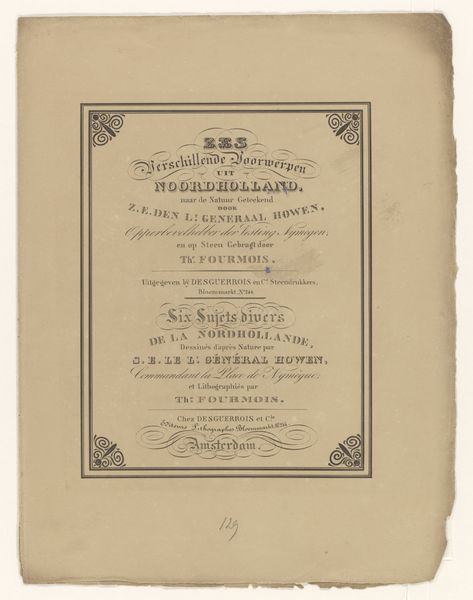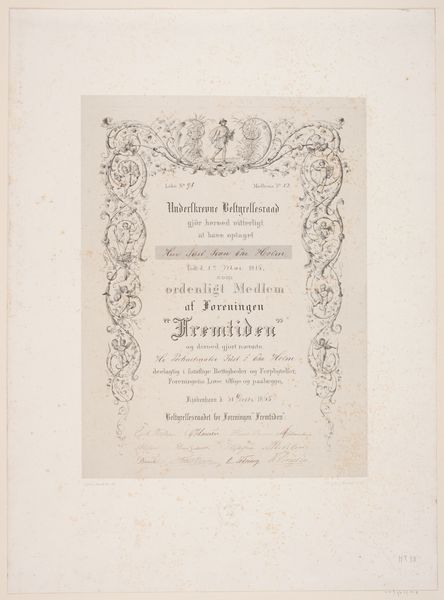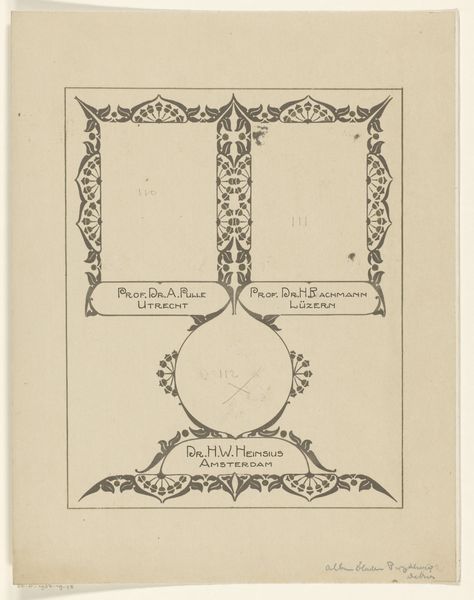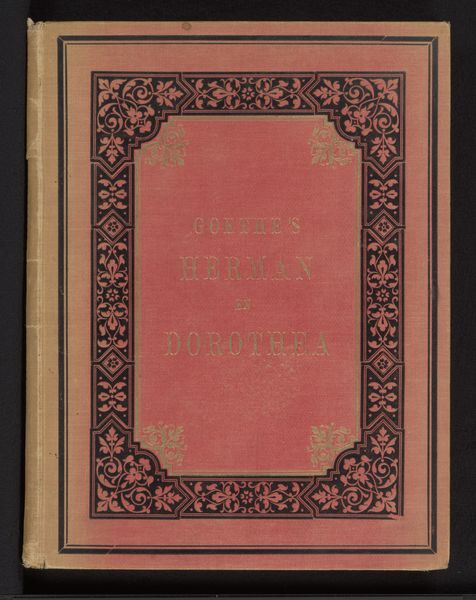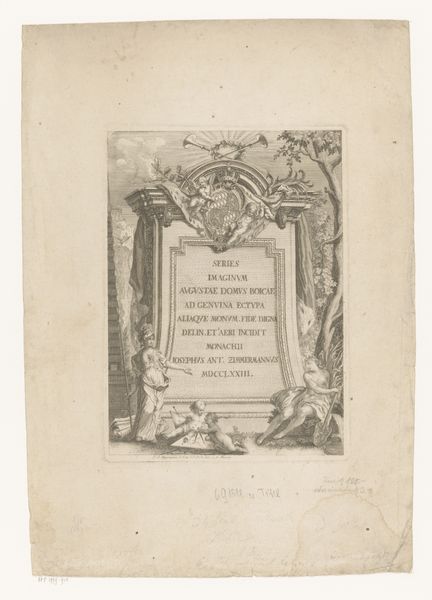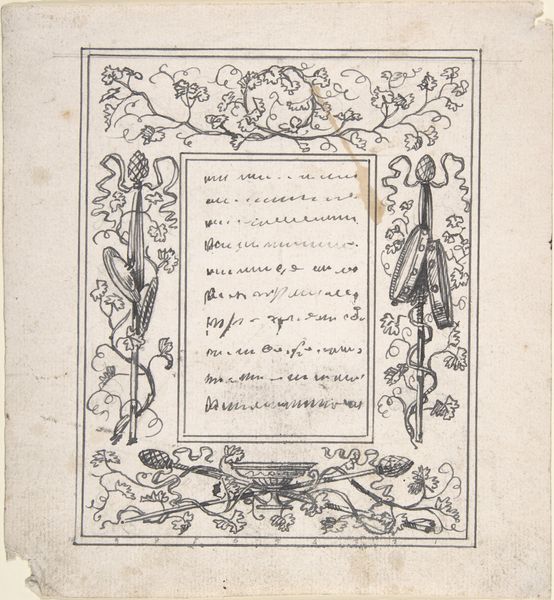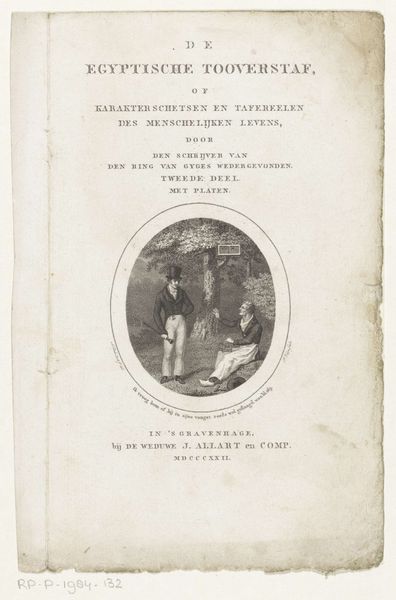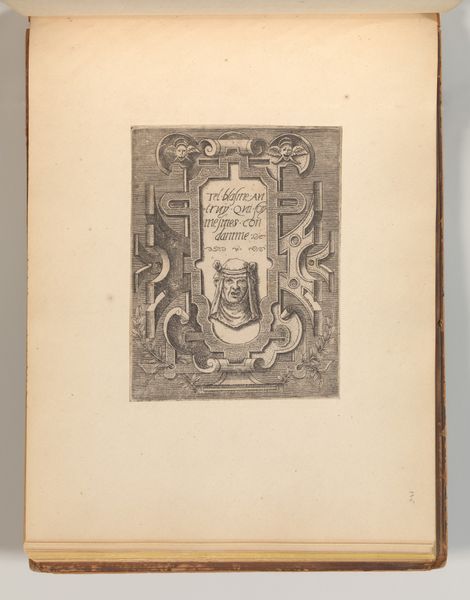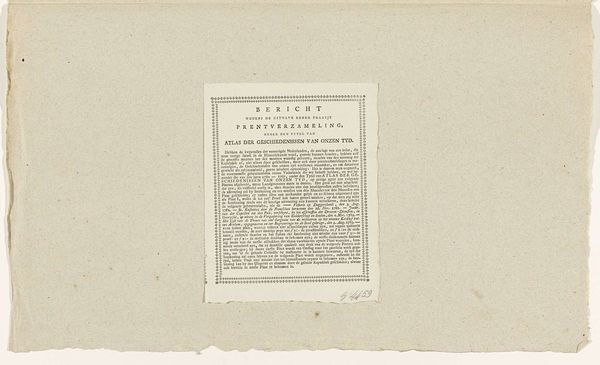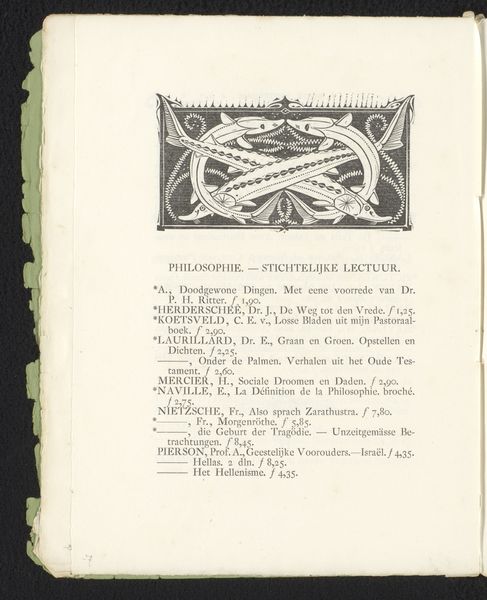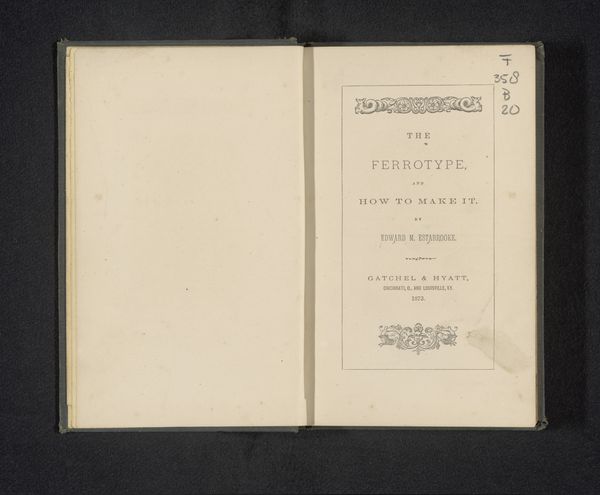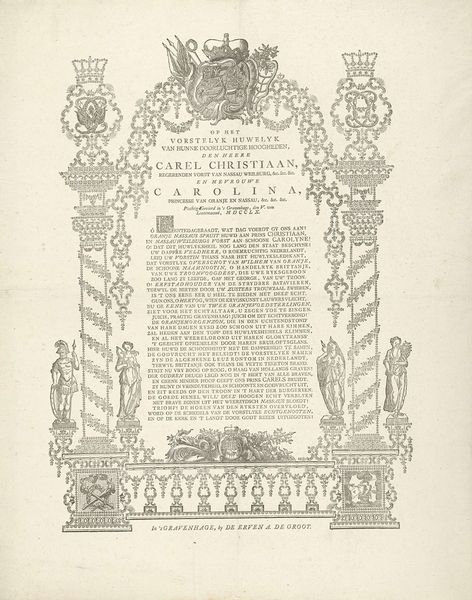
graphic-art, print, typography, engraving
#
graphic-art
#
neoclassicism
# print
#
typography
#
history-painting
#
decorative-art
#
engraving
Dimensions: 235 mm (height) x 156 mm (width) (plademaal)
Curator: Standing before us is the title page for the Royal Theatre's repertoire from 1828, created by Hans Christian Hansen. It is rendered in engraving and showcases both print and typographic elements. Editor: It feels incredibly ornate, almost obsessively detailed. The faces on either side – one happy, one sad – definitely create a theatrical mood, even before you know what it is. Curator: Indeed. Hansen's piece provides a compelling example of how printed material functioned within the burgeoning cultural sphere. Consider the social implications: The engraving and the printing of it signals a democratization of access to theatrical programming through these repertoires for the growing literate public. The printing method also affects reproducibility of Hansen’s labor and craftsmanship. Editor: And the imagery itself reflects power structures. The crest at the top clearly identifies the royal patronage – crucial for the theatre's standing and funding. I imagine its display helped solidify the theatre’s cultural authority and project the monarchy's taste. I’d also wonder about where and how this image circulated among different social classes, how the public would've felt toward the Theatre knowing the Monarchy approved of its workings, for example. Curator: Absolutely. And if we delve into the material production, examining the engraver's techniques and the quality of the paper, we begin to see not only the artistic choices, but also understand the labor involved in circulating this object among social actors like performers, producers and viewers. We can also analyze how this circulation and artistic practices affected theatre. It also highlights the relationship between Hansen and the institutions facilitating the theatre, revealing the artist’s positionality. Editor: Right. We're not just looking at a decorative title page; we are engaging with the historical power dynamics reflected in artistic labor and how visual imagery legitimizes institutions, royal and otherwise. This is more than craftsmanship, is social narrative materialized! Curator: A fitting sentiment to ponder while admiring Hansen’s delicate work, thank you. Editor: It does give you a lot to think about, definitely adding new appreciation, thanks.
Comments
No comments
Be the first to comment and join the conversation on the ultimate creative platform.
